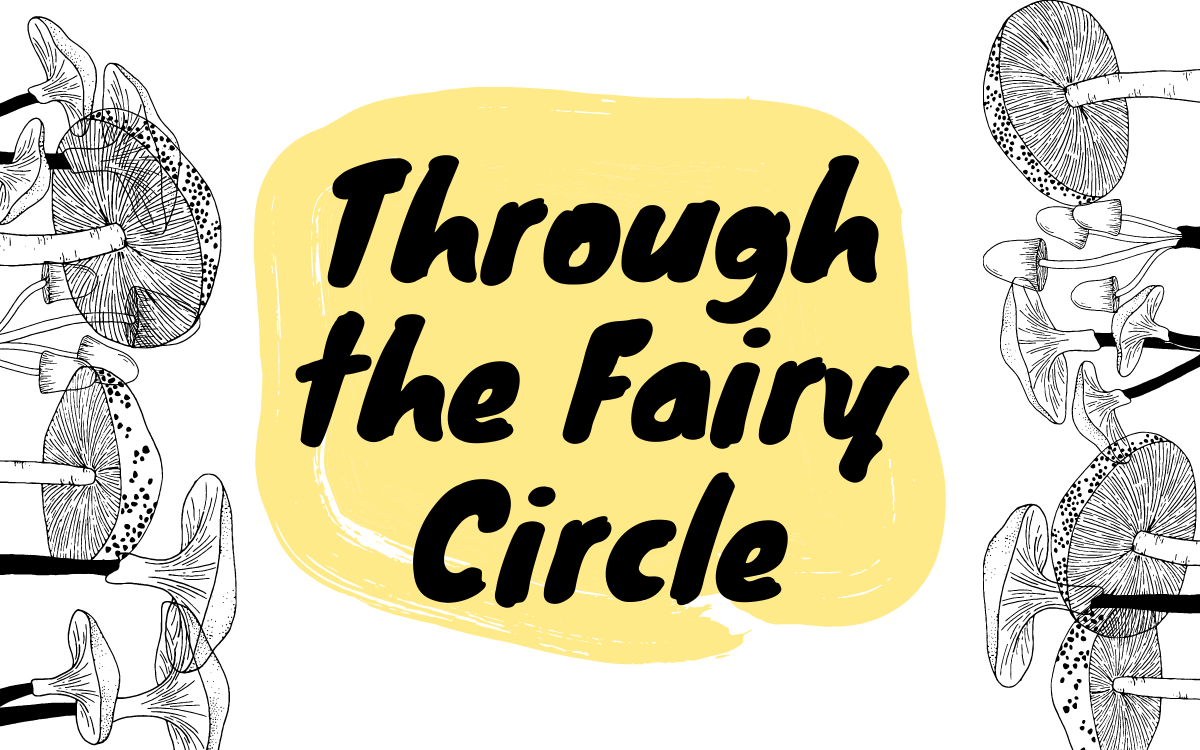Exploring fairy worlds, audio plays, and morality of all kinds

Delivering commendable storytelling and attention to detail, Through the Fairy Circle offers something for all ages.
Of the many splendors of a Kingston summer, one of the finest has to be exploring its surrounding islands. Located at the intersection of four waterways, the city gazes upon a handful of isles, each with its own community and call for exploration. While the grassy stretch we have come to know as Wolfe Island offers the people of Kingston a beautiful daytrip, a sandy beach and one heck of a bakery, one performance at the Storefront Fringe Festival sees it also serving as theatrical inspiration.
Created by Kingston-grown creators James Hyett and Shannon Kingston in collaboration with Toronto-based sound designer Uri Livne-Bar, Through the Fairy Circle weaves a glittering tale that is both charming and visually fascinating—and it’s an audio play. Upon years of hearing about the fabled fairy world from her father and grandmother, our protagonist Denny is determined to find her way in. After encountering a bad luck spirit that feasts on her family, she seeks help from a mischievous and mysterious fairy named Femone who gifts her good luck in exchange for her time (very cryptic). When it is later discovered that the fairies might be guided by tainted intentions, it is up to Denny and her family to make right what is wretched.
While I was initially hesitant about the piece being solely streamed on Vimeo (I had hoped to listen to it in, I don’t know, a field), to my delight, the field, the breeze, and the island itself were all brought into my bedroom. Sitting up in bed with a cup of tea, I closed my eyes and raced with Denny and her family through this whimsical world where fairies and spirits of luck are only a thin world away. As Hyett mentioned during a Kick and Push launch event, this format also allowed for subtitles, which enhanced the accessibility of the piece and added to the overall storybook feel.
After this discussion, I began to notice and appreciate the care taken by this team in crafting their performance. Before the tale even begins, Hyett (who narrates and skillfully speaks a good number of the characters) examines the history of Wolfe Island, on which the story takes place. In a way that is both informative and provoking, he acknowledges the peoples who inhabited the island before it was purchased in 1783 by the colonizing William Crawford, and even details what the island was traded for (spoiler alert, nowhere near enough).
By beginning the piece with this history, the team non-abrasively challenges both its young and not-so-young listeners to consider this exchange in a modern context. The same way that a fairy tale might, we are asked to sit with this knowledge and determine the morality of the situation. For any parents with youngsters listening together, this is a prime catalyst for exploring Indigenous history, introducing concepts of colonization, or discussing relationships with the land.
Continuing with this momentum, the team’s care for its listeners is reflected in their care for a well-crafted story. Writer Shannon Kingston creates an atmosphere that is whimsical and well-paced, and with characters that seem to jump off the page—or rather, out of the speakers. The tale captures the essence of island living, from summer afternoons spent exploring, to babysitting favours from the neighbours, to needing to leave in time to catch the ferry.
When it comes time for the fantastical, Hyett and Kingston handle multiple roles in a way that is both campy and enchanting. In having two performers voice multiple roles, the story feels like it is being put on by friends around a campfire or before bed. The two also exhibit quite a range of voices, with Kingston reaching the shrill complaints of little sister Sam and Hyett uttering the low drawls of Femone.
Equally as necessary as the spoken words was the dynamic sound design by Livne-Bar. Through various wind instruments, soft piano and a lot of swamp noises, multiple moments are heightened, and various atmospheres are achieved. The abrupt crescendo ending with a small pop work to intensify the transition between worlds, while bits of punctuated silence effectively enhance moments of tension. Where the form saw a lack of visuals, Livne-Bar did a terrific job of audially shaping a sense of understanding.
As I sipped the last bits of tea and listened to the poem that concludes Through the Fairy Circle, I sighed in appreciation of the audio performance. Over the course of an hour, I had been transported to an island that, though I know partly through long bike rides, had been given fresh eyes with which to see. Whether it was through Denny’s adventures or its Indigenous provocations, Through the Fairy World brings new magic to an old island.

Through the Fairy Circle is available on demand through the Storefront Fringe, with tickets available here until August 15th, 2021.